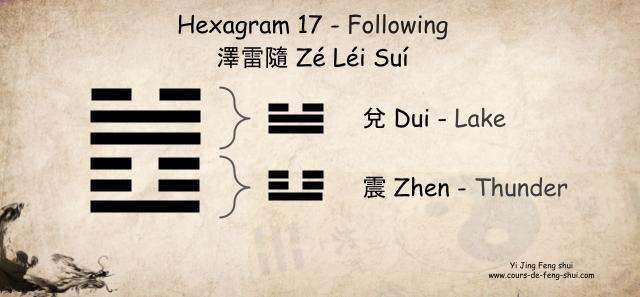
Hexagram 17 of the Yi Jing, known as Following or 澤雷隨 (Zé Léi Suí) in Chinese, is composed of the upper trigram ☱ 兌 (Dui – Lake, the youngest son) and the lower trigram ☳ 震 (Zhen – Thunder). This hexagram symbolizes conformity to progress, representing the moment when we align ourselves with the natural flow of universal development.
Jia Zi Combination:
Hexagram 17 is associated with Ding Chou (丁丑), the 14th combination of the sexagesimal cycle:
- 丁 (Ding) represents Yin Fire, the celestial stem.
- 丑 (Chou) represents the Ox, the terrestrial branch.
Interpretation of the Hexagram’s Structure:
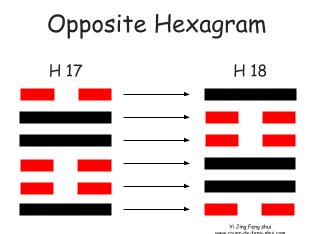
Opposite Hexagram:
- The opposite hexagram of 17 is Hexagram 18 – Gu (蠱), which signifies “Work on that which is corrupt.” This is derived by replacing the Yang lines with Yin lines and vice versa.
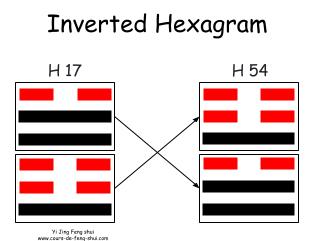
Inverted Hexagram:
- The inverted hexagram, which reveals the origin of the situation, is Hexagram 54 – Gui Mei (歸妹), meaning “The Marrying Maiden.” This hexagram is obtained by swapping the positions of the two trigrams.
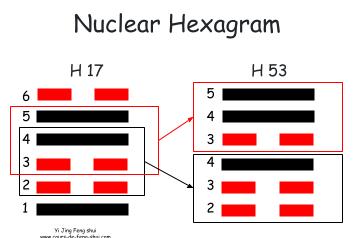
Nuclear Hexagram:
- The nuclear hexagram, representing the heart of the issue, is Hexagram 53 – Jian (漸), meaning “Development.” This is formed by using the four central lines of the hexagram to create two new trigrams.
Mutant Hexagram (Derived):
When a line in Hexagram 17 mutates, it gives rise to a new hexagram, indicating how the situation may evolve:
- Line 6 mutates to form Hexagram 25
- Line 5 mutates to form Hexagram 51
- Line 4 mutates to form Hexagram 3
- Line 3 mutates to form Hexagram 49
- Line 2 mutates to form Hexagram 58
- Line 1 mutates to form Hexagram 45
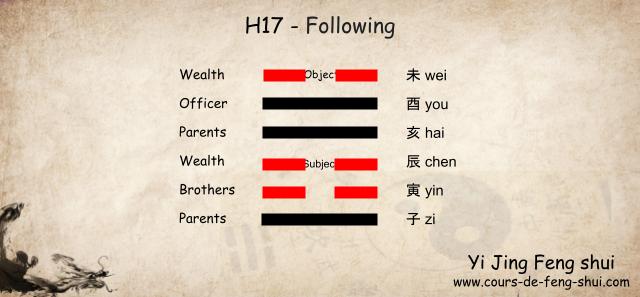
Taoist Yi Jing Wen Wang Gua
In the Taoist interpretation following the Wen Wang Gua (Liu Yao) method, Hexagram 17 is associated with the Zhen (Wood) family and represents a state of return or permanence:
- Subject is placed on the third line.
- Object is placed on the sixth line.
Six Relatives: Each line of the hexagram corresponds to one of the six relatives, reflecting different aspects of the querent’s life:
- 6th line: 未 (wei) Earth – Wealth
- 5th line: 酉 (you) Metal – Officer
- 4th line: 亥 (hai) Water – Parents
- 3rd line: 辰 (chen) Earth – Wealth
- 2nd line: 寅 (yin) Wood – Brothers
- 1st line: 子 (zi) Water – Parents